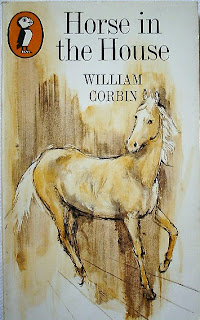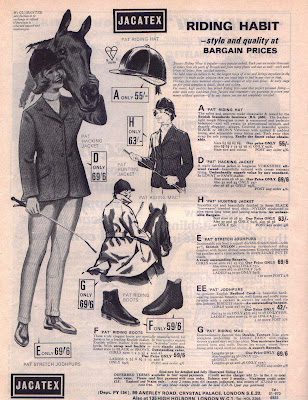The 1960s and the pony paperback
The 1950s had seen more pony books published than any other decade, but the 1960s were not far behind. It was in the 1960s that the paperback pony book really came into its own, after a rather slow start with Puffin Books, the children’s line of Penguin. Puffin printed Joanna Cannan’s Shetland pony story Hamish in 1944, as part of their Picture Puffin line, following it with classic cowboy-and-horse story Will James’ Smoky in 1945, which appeared in their usual paperback format.
Pony books were a very small part of Puffin’s output. Puffin’s first editor, Eleanor Graham, produced very few: Kaye Webb, who took over as editor in 1961, was not a fan. Nevertheless, she recognised a quality story when she saw it, and in the 1960s published gems like William Corbin’s Horse in the House, Don Stanford’s The Horsemasters and Florence Hightower’s Dark Horse of Woodfield, as well as K M Peyton’s Flambards series.
The major producer of the paperback pony book was Collins, with its Armada imprint. Collins had had a couple of goes at setting up paperback imprints before Armada. In the 1950s, their Junior Fontana imprint appeared. These were attractive books with specially commissioned covers: Monica Edwards’ A Cargo of Horses appeared in 1955 with a particularly good example. Collins also produced Spitfire books: half the price of Junior Fontanas - tiny little books you could shove in the smallest of pockets. Patricia Leitch, under the name Jane Eliot, wrote four titles for them in 1967, but Spitfire faded in the 1960s once the Armada imprint appeared.
Pony story after pony story appeared in Armadas. Collins plundered their back catalogue, producing Pullein-Thompson and Monica Edwards titles, all appearing with the distinctive spiky cover illustrations of Mary Gernat and Peter Archer.
Collins used other publishers’ back catalogues too, and the first Ruby Ferguson Jill paperback imprint appeared under Armada.
Knight, the paperback arm of Hodder & Stoughton, realised they were missing a trick with the Jill books, and started publishing them themselves. In doing this, they ignited one of the longest running controversies in pony book history. Knight decided to produce editions that would be immediately distinctive from Armada’s, which had used the original Caney illustrations on their covers. They commissioned Bonar Dunlop to produce new cover illustrations, and some internal illustrations. He drew Black Boy as a piebald: in the original editions, Black Boy was, well, black. Knight changed the text to suit the Dunlop illustrations. In the first book, Jill’s Gymkhana, which appeared in 1968, they even changed Black Boy’s name. He became Danny Boy, but in the next book, A Stable for Jill, reverted to Black Boy, which must have confused readers. Nevertheless, Jill was now launched on the paperback scene, and Knight produced new imprint after new imprint, only stopping in the early years of this century.
Dragon Books (Atlantic Publishing) appeared in the mid 1960s: their first paperback outing was Mary O’Hara’s My Friend Flicka, which was issued with much fanfare, and the chance to win a pony.
Dragon went on to print Gillian Baxter in paperback, and Elyne Mitchell’s Silver Brumby series, as well as the rest of Mary O’Hara’s Flicka series. Her books were produced in volume format: at least they didn’t cut them. Armada produced books to a strict page limit, and many of their authors were drastically abridged to fit into the format. Monica Edwards’ The Nightbird and Josephine Pullein-Thompson’s Six Ponies were particularly brutally cut. Knight abridged too: Primrose Cumming’s Silver Snaffles was cut, and appeared without the iconic Stanley Lloyd illustrations.
At least the books were there. Without the paperback pony book, cheap and widely available, perhaps the pony book would have withered. The pony paperback ensured authors went on being published, and brought their names to a wide public. If you couldn't afford a hardback, a paperback was probably within reach. The strong corporate look appealed to the collecting instincts of a child (certainly this one) and you could build your own library. I still have my own 1960s and 1970s paperbacks. Without them, I'd have been restricted to what the local library offered: and it was nowhere near as much as I managed with the help of Armada, Knight and Dragon.
If you'd like to read more of my posts on the history of the pony book, this is what's appeared so far:
AND there's 40% off all 1960s horse books on my site





.JPG)







Comments
As for the Dragon My Friend Flicka's - we carefuly saved all the coupons and filled in the forms to 'win a Flicka of your very own' - and then found that the competition date had expired several years beforehand. To say that our noses were severely put out of joint by this discovery rather understates the case ...
Madwippit that must have been so, so, lowering.